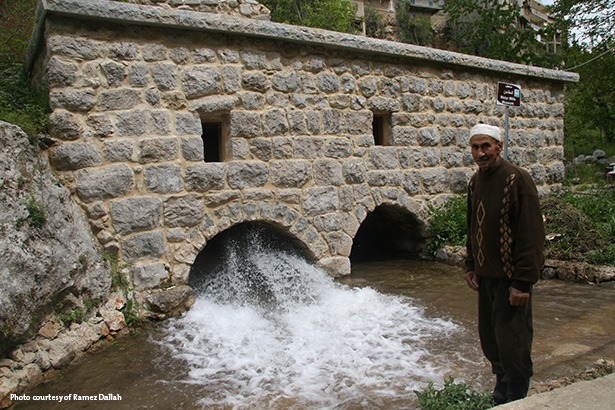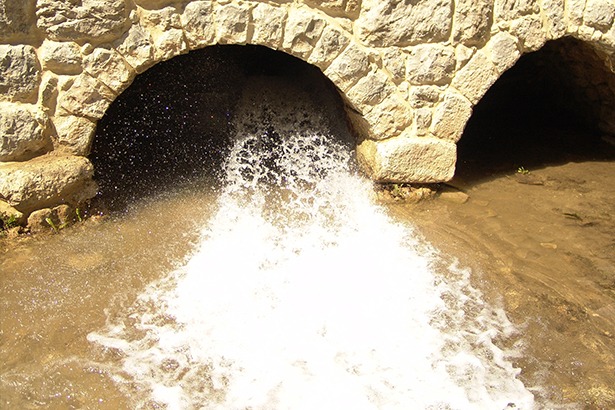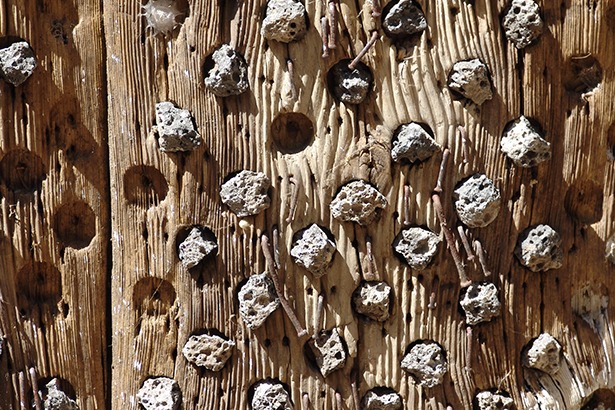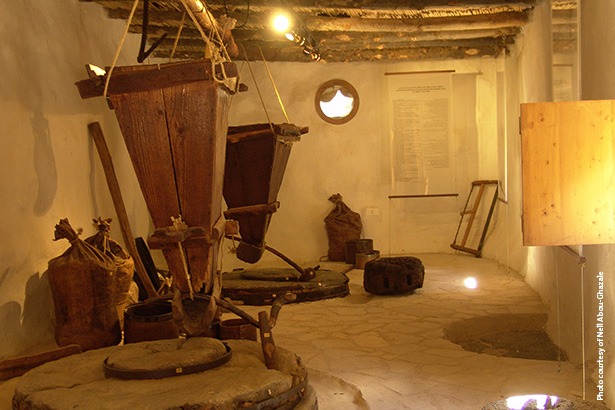Water mills, from a technical point of view, are constituted from two flat horizontal circular stones, positioned on top of each other. The upper one is pierced at its center to allow the grains to fall in between the two stones. The milling operation occurs as a result of friction between the upper and lower stones. This system is a hydraulic adaptation of a more primitive manual, one that dates back to the 7th century B.C.
Water mills are divided into two main types based on the position of the waterwheel: vertical, which requires a right-angle gear, or horizontal, the more primitive type, in which case the rotating millstone can be attached directly to the same vertical shaft. These primitive, horizontally wheeled mills are most common in mountainous terrain, where small brooks can be exploited. This is the case in the village of Shebaa, where the water mills have been restored and made into a museum under the supervision of anthropologist, Moheb Nader Chanesaz.

“Other than their primary function as a hub for traditional economic activity, watermills served as a meeting point for men and women from different communities and villages”.
There are grounds for believing that horizontal waterwheels were first developed in the Middle East, within the geographical boundaries of ancient Palestine, Lebanon and Syria. However, it is usually held that they made their first appearance in Greece. These wheels seem to have been constructed by analogy with the potter’s wheel, which is rotated horizontally by foot. The system is very similar as it has a lower disk for rotation and an upper one for treatment, situated in between a rotation shaft.
This method of exploiting water is probably the result of the local tradition in agriculture, irrigation, artisan technology and building engineering. The fact that the horizontal wheel is commonly spread in Lebanon’s Hasbaya region, where pottery production is closely associated with one of its villages, Rashaya el Fokhar, could further explain the relationship between the potter’s wheel and the horizontal wheeled mill.

Among all the mills in Lebanon, which exceed 500, there are six types of the horizontal waterwheel mill. Shebaa alone has two of these, one that treats dry grains through what is called a “Mathaneh” and another, with a double function, that of treating dry grains and that of extracting oil from olive residue through what is called “Matruf”.
Information resulting from a field survey indicates that Shebaa mills are about 500 years old, but the technical analysis and comparison allows us to suppose that the mills are actually much older than this, especially that the type has proved to be the most primitive among all of Lebanon’s mills.

Historically, the network of people seeking the services of Shebaa’s watermills is very wide. They used to flock from the entire Hasbaya region, better known as the “Arqoub.” Traditionally, it was the location of a specific economic activity whereby people used to pay 12.5% of the wheat or the raw material of any grain for the grinding service. Other than being a hub for traditional economic activity, watermills served as a meeting point for men and women from different communities and villages.
The watermill was a place where people danced, ate and found each other. In fact, the man who was operating the last functioning mill in Shebaa, before its rehabilitation process, had met and fallen in love with his current wife at the watermill.
Local guide Ramez Dallah +961 3 672 262

Places to stay
Rachaiya El-Fokhar, Hasbaya
- Esber Guesthouse, host: Jihad Esber.
- Tel: +961 3 429 745 / +961 3 643 859
Ebl Es-Saqi
- Saadeh guethouses, host: Samira Saadeh
- Tel: +961 3 745 712
- Dana Hotel, Ebl Es-Saqi
- Tel: +961 7 831 000 / +961 3 421 233
Article edited on November 13, 2021
Loading
